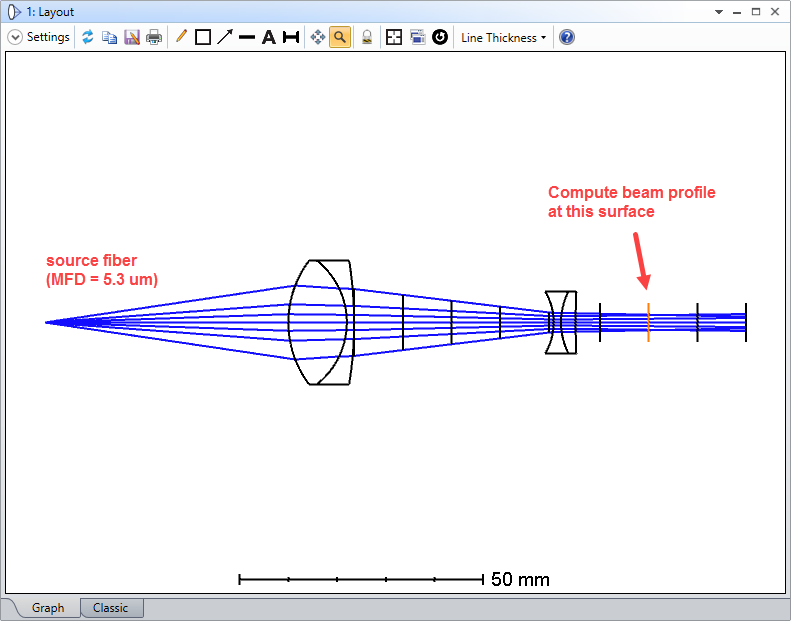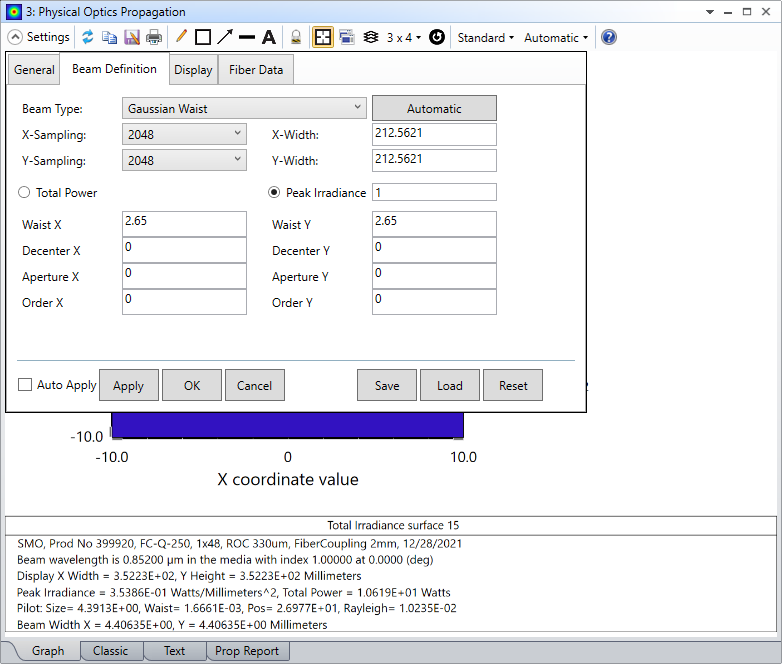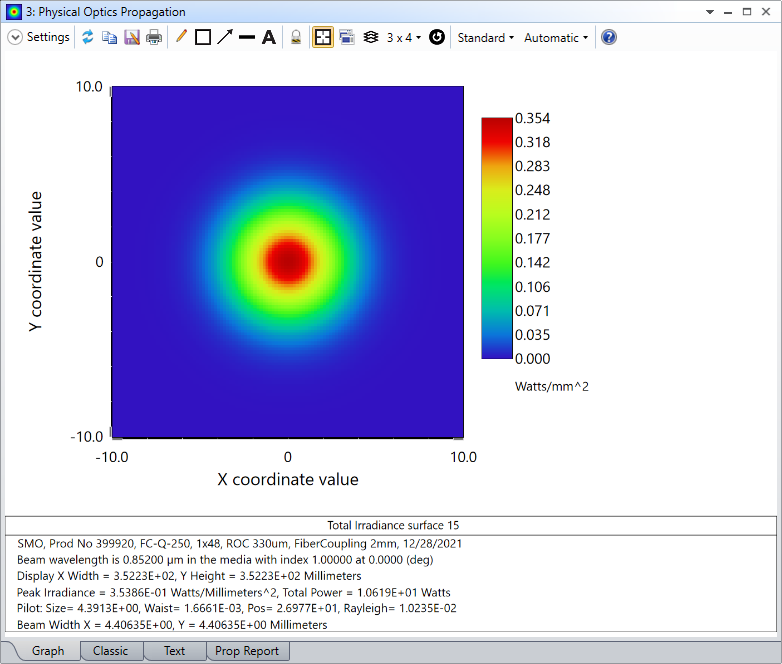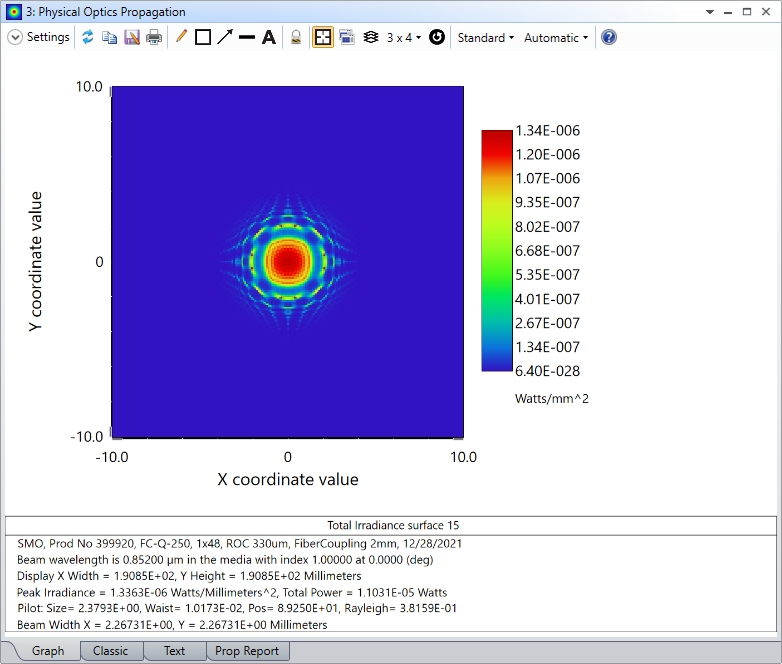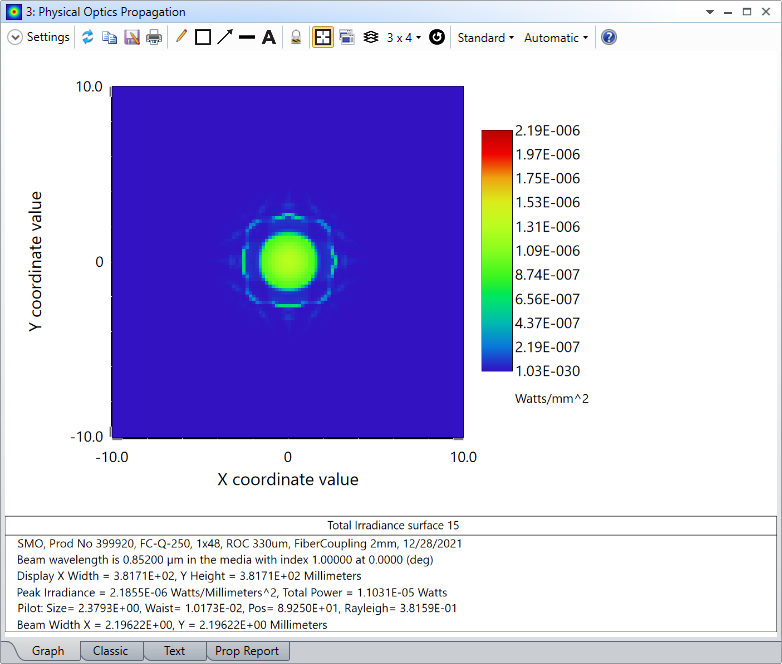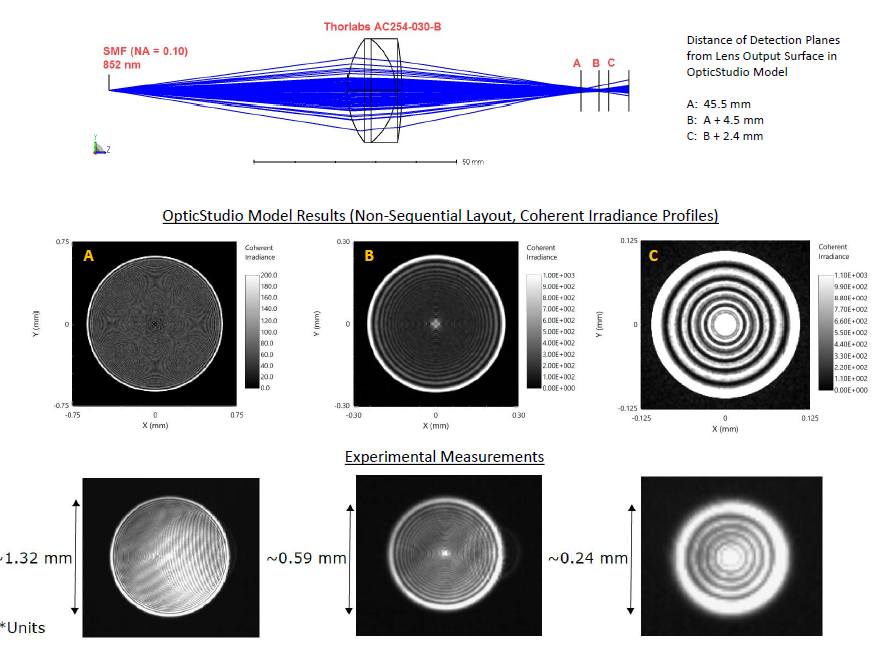Hello Reader,
I’m a beginner in using Zemax and would appreciate assistance to resolve an issue of the field
profile obtained using Zemax not matching with what we see in the laboratory.
The setup is very simple: light exits a fiber (with mode field diameter ~ 5.3 mu-m) and passes through two lenses -- with focal lengths +30 mm and -20 mm (the intention is to test beam-size reduction). [This tutorial was adapted to follow the beam’s path in the ‘Cross-section’ window: Single-mode fiber coupling in OpticStudio – Knowledgebase (zemax.com)]
Experimentally, the field profile after the second lens (-20 mm) is perhaps spherically aberrated and is circularly symmetric. It doesn’t quite seem to match the output of the POP (Physical Optics Propagation) module in Zemax. A .png file showing the disparity and the .zmx/.zar files are attached in the .zip file below.
Thanks a lot for your time,
Sai



